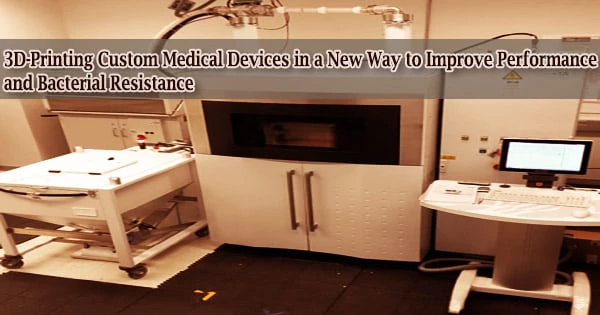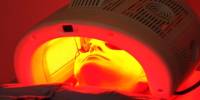University of Nottingham researchers have discovered how to tailor-make artificial body parts and other medical equipment with built-in functionality that delivers superior shape and durability while reducing the risk of bacterial infection at the same time, using a new 3D printing technology.
Study lead, Dr. Yinfeng He, from the Centre for Additive Manufacturing, said: “Most mass-produced medical devices fail to completely meet the unique and complex needs of their users. Similarly, single-material 3D printing methods have design limitations that cannot produce a bespoke device with multiple biological or mechanical functions.”
“But for the first time, using a computer-aided, multi-material 3D-print technique, we demonstrate it is possible to combine complex functions within one customized healthcare device to enhance patient wellbeing.”
The objective is that the cutting-edge design method may be used to 3D-print any medical gadget with adjustable shapes and functionality. For example, the method could be used to make a one-piece prosthetic limb or joint to replace a lost finger or leg that fits the patient perfectly, improving comfort and prosthetic durability; or to print customized polypills, which are multi-drug pills that release into the body in a pre-determined therapeutic sequence.
Antibiotics are antibiotics that are used to prevent and treat infections caused by bacteria. Antibiotic resistance develops when bacteria evolve in response to antibiotic treatment. Antibiotic resistance develops in bacteria, not people or animals.
These bacteria can infect both humans and animals, and their infections are more difficult to treat than non-resistant bacteria’s. Antibiotic resistance raises medical expenses, lengthens hospital stays, and raises fatality rates.
Most mass-produced medical devices fail to completely meet the unique and complex needs of their users. Similarly, single-material 3D printing methods have design limitations that cannot produce a bespoke device with multiple biological or mechanical functions. But for the first time, using a computer-aided, multi-material 3D-print technique, we demonstrate it is possible to combine complex functions within one customized healthcare device to enhance patient wellbeing.
Dr. Yinfeng He
Meanwhile, the world’s elderly population is growing, resulting in an increased need for medical gadgets in the future. This method could improve the health and well-being of older individuals while also reducing the government’s financial burden.
How it works
The researchers used a computer program to design and create pixel-by-pixel 3D-printed objects made of two polymer materials with different stiffnesses that also hinder the formation of bacterial biofilms for this investigation.
They were able to create custom-shaped and -sized pieces with the needed flexibility and strength by optimizing the stiffness in this way. Current prosthetic finger joint replacements, for example, combine silicone and metal components to provide a consistent level of dexterity while remaining rigid enough to be implanted into bone.
Antibiotic resistance is increasing at an alarming rate around the world. New resistance mechanisms are arising and spreading throughout the world, posing a danger to our ability to treat common infectious diseases.
As a research demonstrator, the team was able to 3D-print a finger joint that met both of these requirements in one device while also being able to alter its size and strength to match the needs of unique patients.
Excitingly, the team was able to perform their new style of 3D-printing with multi-materials that are intrinsically bacteria-resistant and bio-functional, allowing them to be implanted and combat infection (which can occur during and after surgery) without the use of additional antibiotic drugs, thanks to an increased level of design control.
A new high-resolution characterization technique (3D orbitSIMS) was also utilized to 3D-map the chemistry of the print structures and assess the bonding between them throughout the part.
This revealed that the two materials were intermingling at their interfaces at extremely small sizes, indicating strong bonding and a device that is less prone to break. The Centre for Additive Manufacturing (CfAM) conducted the research, which was supported by the Engineering and Physical Sciences Research Council.
The complete findings are published in Advanced Science, in a paper entitled: “Exploiting generative design for 3D printing of bacterial biofilm resistant composite devices.”
Prior to commercializing the approach, the researchers want to expand its possible applications by testing it on more advanced materials with additional features such as immune response control and stem cell attachment promotion.
















